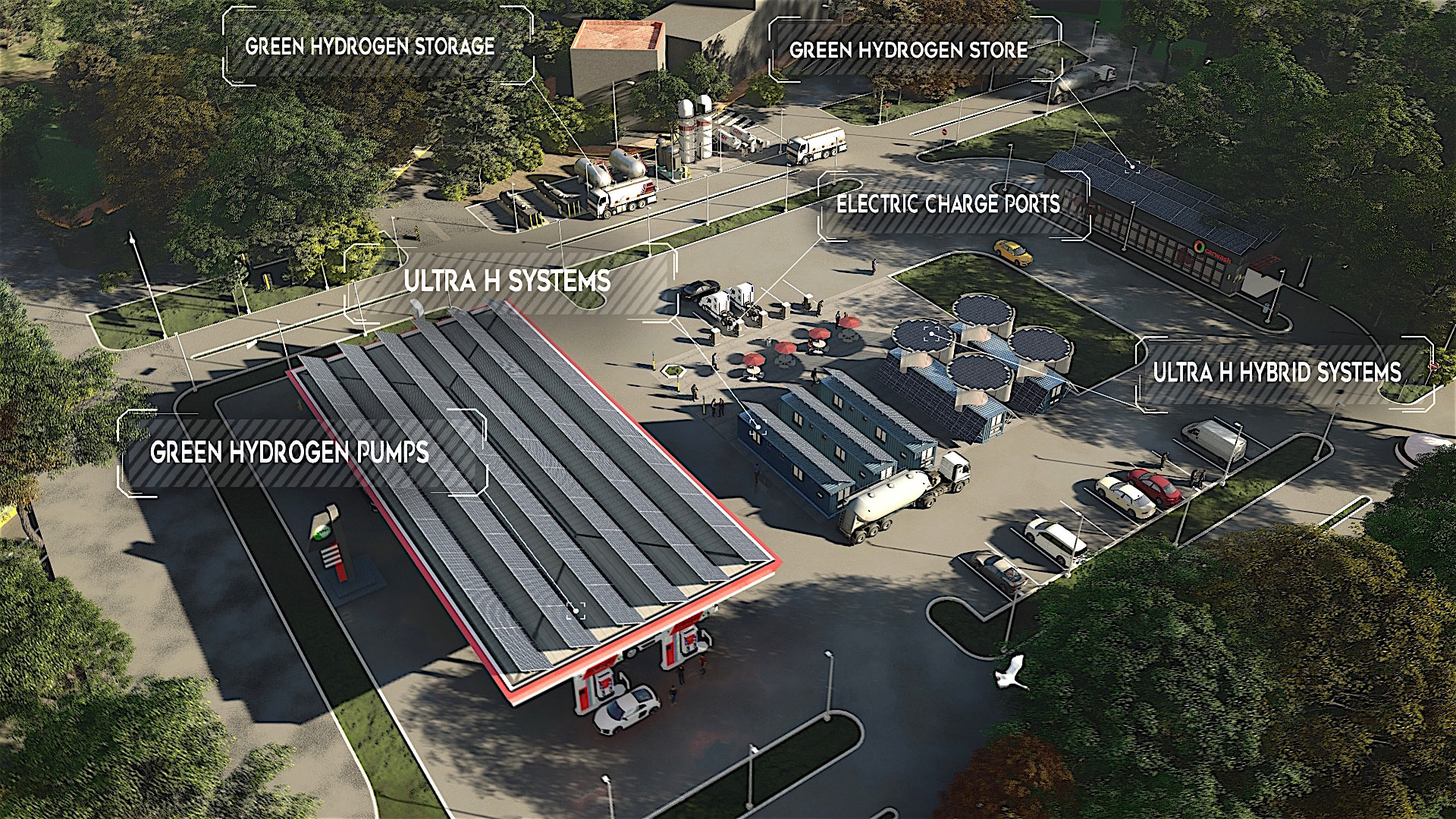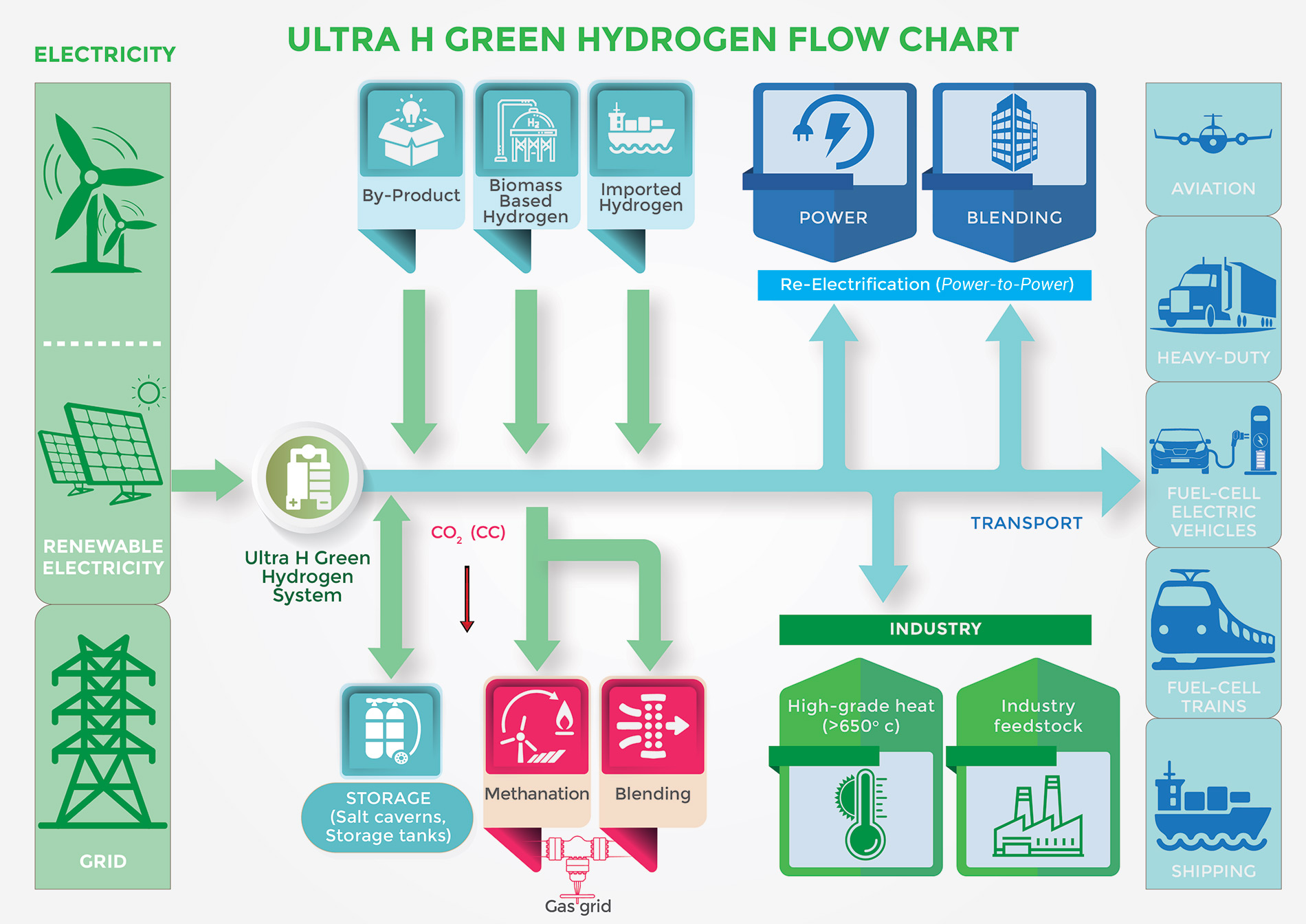Hydrogen has a history of been promoted as “the fuel of the future”, but today that potential is a reality, and it is down to so-called green hydrogen.
Despite being one of the most abundant elements on Earth, hydrogen is not easy to obtain: it must be extracted from other substances, such as water, coal or natural gas. The latter two (coal and natural gas) unsurprisingly (given the current energy markets) are overwhelming where most hydrogen currently originates. This hydrogen is dubbed ‘grey’ or ‘blue’.
Green hydrogen is different: it does not involve large-scale CO2 emissions or depend on the fossil fuel infrastructure. And this is its great benefit because renewable energy provides the clean power needed to extract the hydrogen (through electrolysis) and produce green hydrogen, which stores excess power in a highly versatile form.
Hydrogen storage technology is advancing and new systems, like Ultra H Green Hydrogen Systems Systems offer transformative solutions. Ultra H is fully contained which means they produce their own renewable energy, so are completely self-reliant. This offers yet greater potential because as well as providing backup power to renewable sites, Ultra H can even be used as the sole energy source for buildings, farms or remote installations, etc. as Ultra H produces Green Hydrogen on a continuous duty basis at industrial scale levels.
Such modular units as Ultra H can be installed at almost any location and are scalable, so able to achieve outputs in the multi-megawatt range. The ability to generate their own power means they are not only complementary with existing technologies but offer autonomous and transportable support as well as the promise of a stable, steady, secure and continuous base load power supply.
Ultra H Green Hydrogen Systems:
- Ultra high output hydrogen system on continuous duty basis.
- Renewable Energy Sources: Highest efficiency in the world.
- Class leading energy storage systems.
This versatility of hydrogen has always been known. For example, for years it has been used to power cars and buses. It has also been used in spacecraft propulsion, and due to its abundance in water, can create power virtually anywhere in the world. Today, this versatility is becoming irrefutable, because in tandem with renewable energy, green hydrogen offers power across multiple sectors – to the transport sector, to industry, to commerce and to agriculture. And it can be virtually anywhere.


